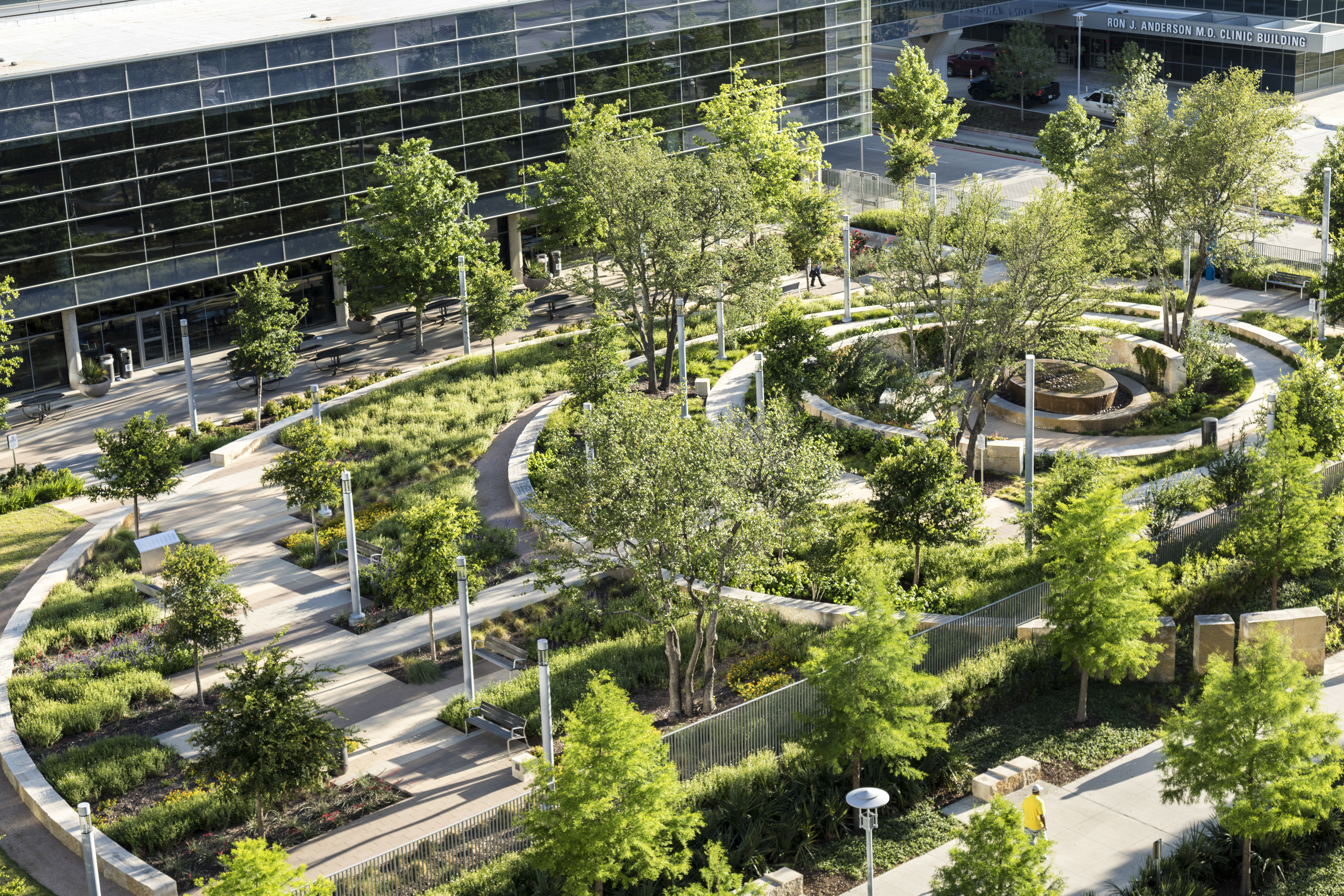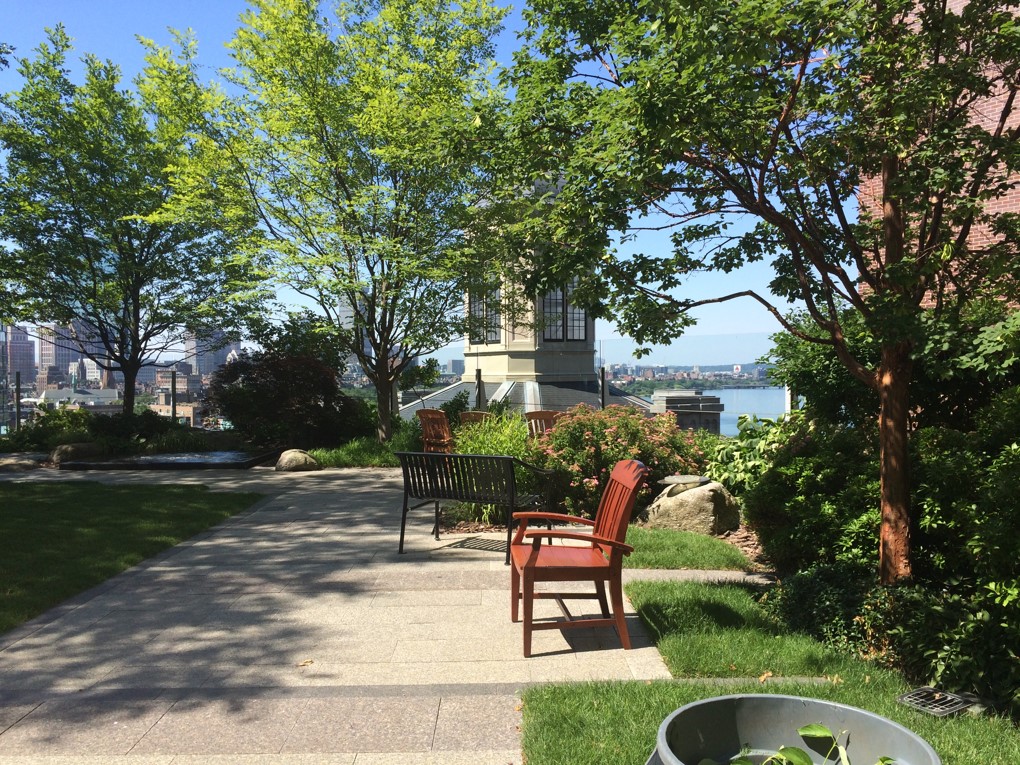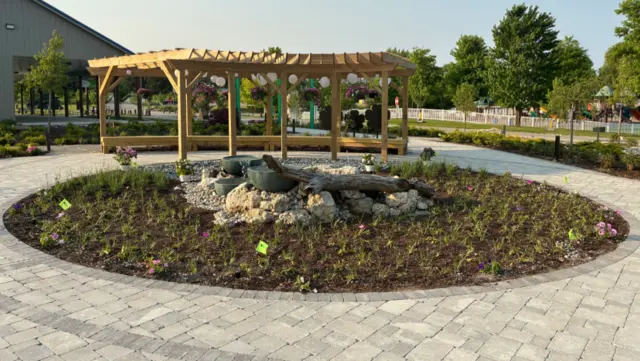
Tips for a Successful Healing Garden Design
Here’s Your Prescription for Success
Ask someone to describe the qualities of a healthcare environment and it’s likely you’ll hear words like “sterile” and “clinical.” That’s probably what you’d expect, but why not expect something more? What if your campus could be described in part as serene, soothing, or, dare we say, verdant? Healthcare facilities across the country are proving it’s possible by adding healing gardens to their landscape.
In our previous article, we shared some of the research examining the correlation between landscape and healing. But what exactly differentiates a healing garden from a nice landscape? Let’s dive deeper.
Passive vs. Active

You might be surprised to learn there’s not just one type of healing garden. In fact, there are two types, each delineating a particular purpose for the space. The first type of healing garden is referred to as a passive restorative garden. These gardens are design to provide mental restoration just from being in the garden.
The second type of healing garden is a called an active enabling garden. These gardens serve as a platform through which services are delivered and can facilitate participative therapeutic opportunities, such as scheduled classes in culinary or creative arts, yoga or meditation.
You might immediately know one of these two types would serve your needs better than the other. But, what if you could see applications for both? The great news is, you don’t have to choose just one. Your healing garden can be both active and passive. The decision is based on who your garden will serve.
People Inform the Design
A study conducted by Clare Cooper Marcus, MA, MCP and Marni Barnes, MLA, LCSW of The Center for Health Design at the University of California at Berkley, found visitors to healing gardens most often are visiting to gain relaxation and relief from mental or emotional fatigue. Overwhelmingly, people prefer spaces with trees, water, open views, and shaded alcoves. Evolutionary biologists speculate the reason for this preference is that it most closely resembles the savannas where humans evolved.

While this provides a useful template from which to begin your design, the needs of the various constituencies who will visit the garden creates an added layer of consideration. Here are some examples of how hospitals across the country designed their healing gardens to meet those needs:
Dallas County’s Parkland Hospital, designed their healing garden with a park-like atmosphere and meandering paths, so both employees and patients could enjoy a relaxing stroll.
The Cedars-Sinai campus in Los Angeles situated their healing garden at the heart of their campus, so it would be viewable from patient rooms, making it enjoyable for ambulatory and non-ambulatory patient alike.
Nemours Hospital in Wilmington, Delaware constructed a butterfly garden in their courtyard, to the delight of the children they serve. Their design is line with recommendations for healing gardens aimed at children, which includes the need for bright colors, features that feel familiar, and a design that facilitates person-environment and person-person interactions.
Similarly, Denver Children’s Home created a sensory and healing garden that appeals to children, families and staff by incorporating outdoor seating, touch-friendly plants, and designated spaces for artwork that adults and kids alike can enjoy.
If you serve multiple constituencies with different needs—such as children and the elderly—it is possible to create a garden that appeals to all. Designing the garden with “rooms”— distinct spaces that each serve a specific purpose—allows for designated areas for every need, without sacrificing overall cohesion. Whatever you choose, make sure the garden is easy to get to, by locating it within the proximity of parking lots, entrances and exits.
Healing in Urban Environments
Hospitals in urban environments with little to no outdoor space aren’t precluded from adding a healing garden to their campus. In fact,

many are utilizing their rooftop space to create their sanctuary. One of the advantages to this method is that it improves the view from patient rooms, particularly those on higher floors. Green roofs also facilitate a reduction in heating and cooling costs by helping mitigate temperature extremes, an attractive cost-saving feature for the long term. The Prebys Cardiovascular Institute at Scripps Memorial Hospital in La Jolla, California is one of the many facilities leading the way. The region’s largest and most advanced center for cardiovascular care includes a green roof featuring more than 26,000 plants.
No matter what your vision includes, the sky’s the limit. Whether it’s a serene Zen garden, a children’s garden with climbable sculptures, or a network of walking paths, it is possible to have it all. An experienced landscape partner with extensive healing garden expertise can help you bring it to life. If you’re ready to explore the possibilities, contact us.



